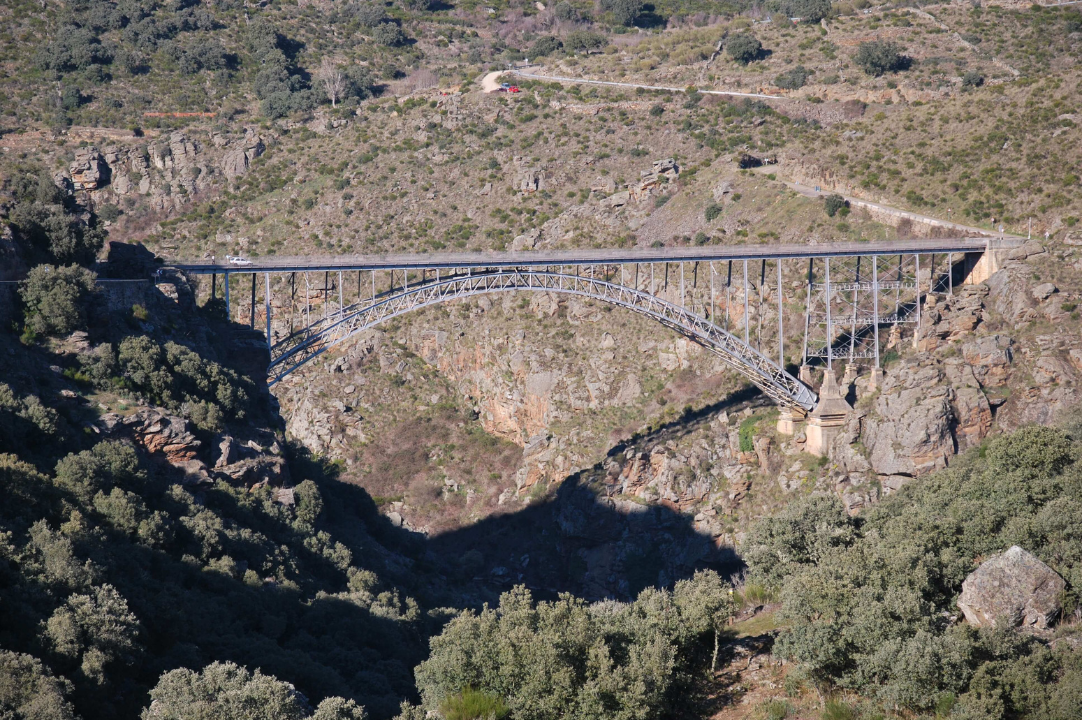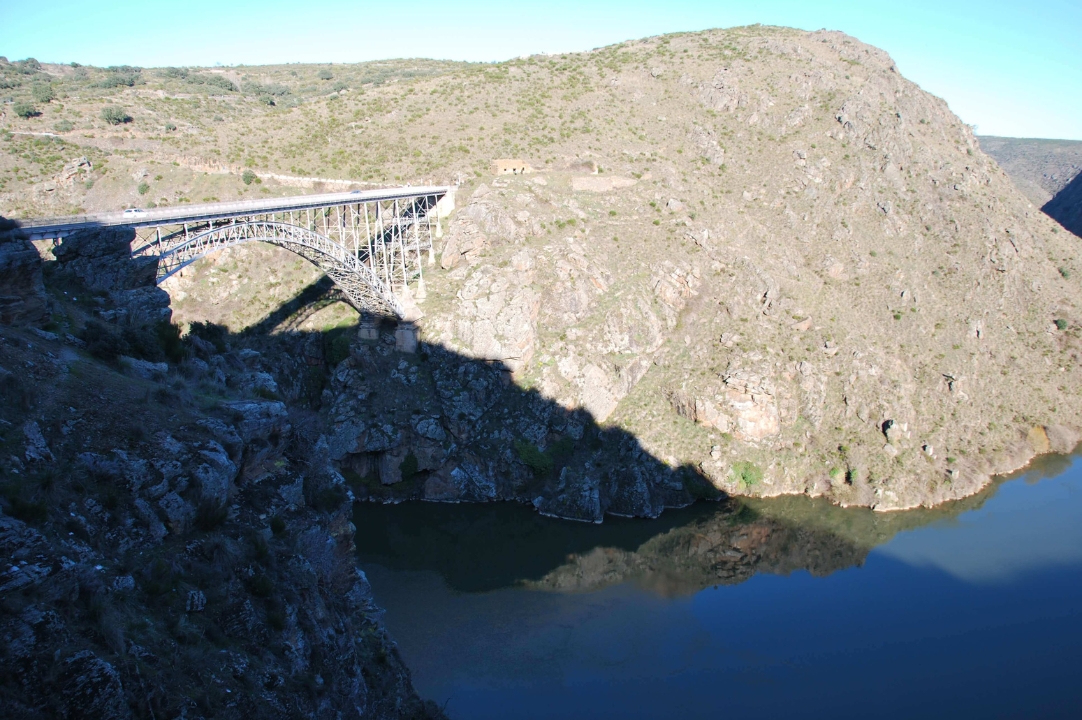Puente de Requejo o Puente Pino
Welcome once again to our Blog! This time, we’re going to talk about a very significant landmark.
We are referring to the Puente de Requejo, also commonly known in the area as Puente Pino, one of the most popular spots that amazes tourists who come for a rural getaway to some of the charming accommodations in Los Arribes del Duero.
History and Origins of Puente de Requejo

Before anything else, let’s locate the Puente de Requejo, or as it is popularly known, Puente Pino, due to its proximity to the Zamoran town of Pino del Oro. This impressive structure is situated between the municipalities of Pino del Oro and Villadepera, both in the autonomous community of Castilla y León, Zamora. It made direct communication possible between the regions of Sayago and Aliste.
Before the construction of Puente de Requejo in 1754, by order of King Fernando VI, the only way for people to cross between these areas of Castilla y León was a small pulley boat. Crossing required help from both sides of the river to pull heavy ropes to move the unstable boat.
Because this task demanded great effort, transporting goods was minimal, leaving both Pino del Oro and Villadepera without essential resources for long periods.
Characteristics of Puente de Requejo / Puente Pino
Here are some interesting facts from the oldest documents:
Although construction of Puente Pino began in 1754, it was officially inaugurated on September 15, 1914, with Abilio Calderón, the Director General of Public Works, in charge of the official presentation.
Even today, the bridge is impressive; back then, it was even more so. The viaduct spans 190 meters in length and reaches approximately 90 meters above the Duero River.
A striking feature is its enormous steel arch, which spans over 120 meters. At the time, it was one of the few bridges in Spain with a steel arch, which contributed to the long delay in starting the construction. In total, 450 tons of steel were used in the building of Puente Pino.
Connection Between Puente de Requejo and the Eiffel Tower
What fascinates tourists even more is the bridge’s connection with Gustave Eiffel, the creator of the iconic Eiffel Tower.
Mateo Sagasta first proposed a bridge connecting Pino del Oro and Villadepera, but it wasn’t until Federico Requejo, a native of Sayago, insisted that the project gained traction. José Eugenio Ribera, the engineer chosen for the construction, had to submit over ten designs before final approval in 1754. Ribera even consulted Gustave Eiffel, who suggested adding large articulated arches in the shape of arrows. Ribera rejected the idea due to weight and budget concerns.
Ultimately, Ribera’s design prevailed, giving us a bridge with a 120-meter steel arch supported by concrete spans, making Puente de Requejo one of the first steel-arch bridges in Spain.
Why Visit Puente de Requejo / Puente Pino?

The bridge is a key landmark in Parque Natural de Los Arribes del Duero, frequently listed among the top sites to see in the area. Each year, hundreds of tourists visit, often staying in rural accommodations nearby.
The main attraction? Its breathtaking panoramic views of the Duero River and surrounding landscapes. The bridge’s height ensures unobstructed vistas. There are also multiple viewpoints around Pino del Oro, such as Mirador Peña Centigosa, Mirador Puente de Requejo, and Mirador Pueyos, offering spectacular perspectives.
Visiting Puente de Requejo
Today, Puente de Requejo remains a historical landmark and fascinating destination for curious travelers. For a deeper experience, stay at La Posada Doña Urraca and enjoy an exciting kayak tour along the Arribes del Duero, where expert guides will lead you along the canyon, letting you enjoy the wildlife, the soothing sounds of nature, and the impressive structure of Puente Pino from below.
We look forward to welcoming you for an unforgettable experience!
If you want, I can also translate this to French so you have both English and French versions for your blog. Do you want me to do that?

